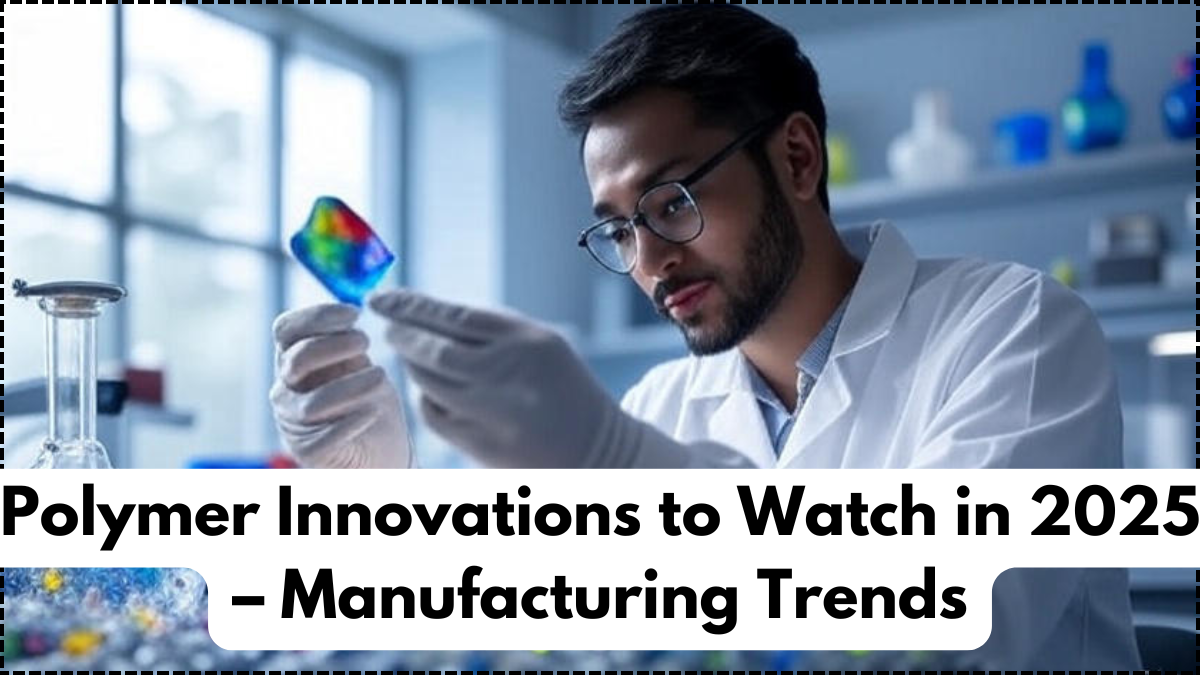The global demand for advanced materials has pushed the polymer industry to reinvent itself, and 2025 is shaping up to be a milestone year. With breakthroughs in chemistry, sustainability, and manufacturing processes, New Polymer Innovations 2025 are revolutionizing how industries build, package, and create products. From automotive to medical devices, every sector is witnessing the impact of cutting-edge manufacturing upgrades tied to polymer science.
This wave of innovation is not only driving efficiency but also aligning manufacturing with global environmental and economic goals. Here’s a closer look at the most transformative polymer technologies and trends emerging in 2025.

Key Polymer Breakthroughs in 2025
The year 2025 is marked by new classes of smart, biodegradable, and high-performance polymers. These developments aim to address the critical needs of sustainability, durability, and functionality.
Highlights include:
-
Self-Healing Polymers: Widely adopted in electronics and automotive applications, these materials automatically repair micro-cracks.
-
Recyclable Thermosets: Traditionally unrecyclable, new catalysts now allow thermosets to be broken down and reused.
-
Bio-based Polyesters: Derived from agricultural waste, these polymers are lightweight, strong, and biodegradable.
-
Graphene-Enhanced Polymers: Offering superior conductivity and strength for high-tech manufacturing.
The New Polymer Innovations 2025 also introduce customized material properties tailored for specific environments, enabling smarter design flexibility.
Manufacturing Upgrades Driving Polymer Trends
The impact of manufacturing upgrades has been profound in realizing the full potential of polymer innovations. Companies are now combining materials science with Industry 4.0 technologies to accelerate product development.
Key upgrades include:
-
3D Printing with Advanced Polymers: High-speed additive manufacturing now supports medical-grade and aerospace polymers.
-
AI-Driven Polymer Blending: Machine learning models optimize polymer mixes for strength, flexibility, and cost-efficiency.
-
Microwave-Assisted Polymerization: Reduces energy use by 40% and accelerates chemical bonding in polymer creation.
-
Plasma Surface Treatment: Enhances bonding and paint adhesion, especially in automotive and electronics manufacturing.
These innovations ensure that New Polymer Innovations 2025 are implemented at scale with increased productivity and quality.
Industrial Sectors Benefiting Most
The influence of new polymers is spread across multiple industries. Here’s how some sectors are integrating them:
| Industry | Application of New Polymer Innovations 2025 |
|---|---|
| Automotive | Lightweight parts, crash-resistant panels, paintable surfaces |
| Healthcare | Biodegradable implants, flexible catheters, drug delivery gels |
| Packaging | Compostable films, smart anti-tampering wraps |
| Electronics | Heat-resistant circuit coatings, flexible displays |
| Construction | Insulating foams, anti-microbial piping, durable sealants |
These innovations are reshaping product lifecycles, reducing waste, and enhancing consumer experience.
Sustainability and Circular Economy Focus
A major driver behind New Polymer Innovations 2025 is sustainability. Polymer manufacturing is now aligned with global climate goals through:
-
Reduction of single-use plastics using compostable alternatives
-
Recycling-integrated production lines
-
Use of carbon-neutral inputs in polymer synthesis
-
Closed-loop systems to recapture and reuse polymer waste
These trends are vital for manufacturers seeking green certification and long-term cost savings through material efficiency.
Investment and Policy Push
Governments and industry bodies worldwide are offering grants and tax credits to companies embracing manufacturing upgrades through polymer innovation. For example:
-
India’s Technology Upgradation Fund Scheme (TUFS) now includes smart polymer tech
-
The EU is funding 50+ projects on recyclable polymers under Horizon Europe
-
Japan is offering subsidies for companies transitioning to bio-polymers
With policy backing and market incentives, the pace of New Polymer Innovations 2025 is expected to accelerate throughout the decade.
Conclusion
New Polymer Innovations 2025 are at the heart of a materials science revolution, transforming how products are designed and manufactured. Coupled with powerful manufacturing upgrades, these advancements promise a more sustainable, efficient, and intelligent future for industries across the globe. Manufacturers who embrace these technologies early will lead the charge into a high-performance, low-impact production era.
FAQ
What are the key new polymer innovations in 2025?
Some major developments include self-healing polymers, bio-based polyesters, graphene-enhanced plastics, and recyclable thermosets.
How are these innovations impacting manufacturing?
They are enabling stronger, lighter, and greener products, while manufacturing upgrades like 3D printing and AI blending optimize cost and performance.
Which industries benefit most from polymer innovation?
Automotive, healthcare, packaging, electronics, and construction are among the sectors experiencing the greatest transformation.
Are these polymers environmentally friendly?
Yes, many of the New Polymer Innovations 2025 are biodegradable, recyclable, or derived from renewable resources.
Is government support available for adopting these technologies?
Yes, many countries are offering subsidies, tax incentives, and grants to support manufacturing upgrades tied to polymer innovations.
Click here to know more